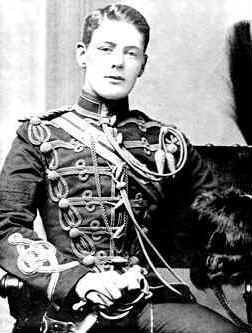 | ||
Cornet was originally the third and lowest grade of commissioned officer in a British cavalry troop, after captain and lieutenant.
Contents
It was abolished in the Cardwell Reforms of 1871 and replaced by sub-lieutenant. It is equivalent to a modern second lieutenant. The Blues and Royals and Queen's Royal Hussars still use it to refer to their second lieutenants, although the latter is the formal rank held by these officers.
This rank was also used in other countries, e.g., in the Russian Empire.
History
The rank was in use by the time of the English Civil War. Among famous cornets in that conflict were George Joyce, Robert Stetson, and Ninian Beall.
It was abolished along with the purchase of commissions in the Army Reform Act of 1871, replaced by second lieutenant.
The ranks of ensign and cornet were abolished in the US Army in 1815.
The rank also existed in other nation's cavalry troops, such as those of Sweden (kornett) and Imperial Russia (корнет), and by the Continental Army in the American War of Independence. General Alexander Macomb was initially commissioned a cornet in a career in which he eventually became Commanding General of the United States Army. It is still used in the artillery and cavalry divisions of the Netherlands (kornet).
The rank of veld-Cornet was used for the senior officer of a ward or sub-district in the independent republican states of the Transvaal and Oranje-Vrystaat in late 19th century South Africa. They were elected by the commandos of their ward for periods of three years. In the case of large wards, an assistant field cornet could also be chosen. The rank was reminiscent of the Dutch use in cavalry troops that the commandos most closely resembled. In apartheid-era South Africa, the rank of field cornet was used in the South African Army from 1960 to 1968.
Traditional duties
The subaltern rank of cornet was the equivalent of the contemporary infantry rank of ensign, today's second lieutenant in each. The cornet carried the troop standard, known as a "guidon".
